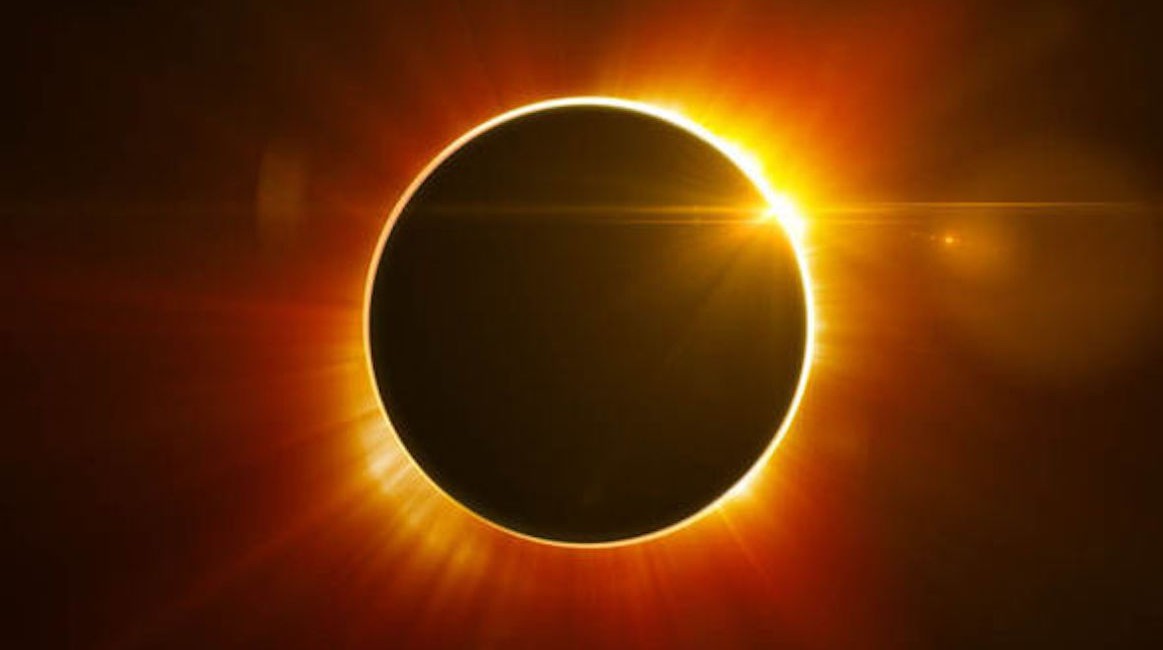By Michael Natoli
Many of us have experienced several celestial events, from supermoons to lunar eclipses, or the transit of Venus, but none of those inspired quite the sensation like the total solar eclipse of August 21, 2017.
A total solar eclipse is unique amongst these rare events in its ability to elicit changes in the environment, especially within the air experiencing a total eclipse. During this event, anyone within the path of totality can see the moon completely cover the sun. In this path, one not only can see the spectacular corona and 360° sunset but it is possible to experience the strange drop in temperature, hear the crickets chirping, and watch the animals prepare for the night at midday.
The Road To Get There
My journey to see the eclipse began back in high school when I learned that on very rare occasions, the moon could pass perfectly in front of the sun and send the surface into total darkness. Most Americans had never experienced a total solar eclipse since the last event happened in 1979 and then only passed over a small region of the Pacific Northwest and was obscured by cloudy skies. This time, many in North America could experience this phenomenon by traveling to a location within the path of totality or at the very least settle for the partial eclipse.
I recall having read an old newspaper clipping from the 19th century about the experience of a total solar eclipse from the summit of a mountain and was inspired to do the same and set out to travel with some friends for an experience of a lifetime.
The Day of The Eclipse
A few friends and I decided on watching the event from an altitude of 12,197 feet on the top of Diamond Peak in Southeast Idaho, nestled right near the center of totality. We woke up before sunrise to begin the long climb up the mountain’s east ridge, arriving at the top just as the partial phase began. With about 50 others, all toting eclipse glasses, telescopes, and cameras, we lined up along the broad summit that typically sees less than 50 climbers in an entire year. When the last rays of sunlight were extinguished, distant mountains previously shrouded by wildfire smoke suddenly emerged in contrast with the vibrant red and orange glow along the entire horizon. It is hard to describe those two minutes of totality with either words or pictures, but I can say it was one of the most incredible experiences of my life!
In the Interest of Science
The eclipse was the main point of discussion in the Atmospheric Science Department at Colorado State University (CSU) where I study for several weeks before and after the event.
Here are some of the observations:
• When I summited Diamond Peak, I was wearing a T-shirt, but by the time totality began, I was shivering under four layers of clothing one ordinarily wears in the winter. The weather station at CSU recorded about a 10F drop in temperature in the hours leading up to the maximum eclipse (95%). Even in the partial phase, the surface was receiving less radiation from the sun. So even though it was during the morning hours and the sun angle was still increasing, the ground and atmosphere behaved as if it was late evening.
• One of the common summertime weather phenomena in the United States is the classic afternoon thunderstorm. On a normal day, the ground gets heated rapidly by visible radiation from the sun, which causes the atmosphere to become unstable. When very warm air is positioned underneath very cold air, the warm air rises rapidly in a process known as convection. As it rises, it cools down due to the decrease in air pressure higher in the atmosphere. If there is sufficient moisture present, water vapor will then condense into liquid or ice particles because of the colder temperatures, forming a cloud, similar to how fog forms on a cool morning.
• However, on August 21, 2017, much of the United States saw cooling at the surface at midday thus weakening convection. From NOAA’s new satellite, called GOES16, we could see as clouds pop up in the morning, they vanish when the shadow of the moon passes over, and then reappear as solar radiation increases again after the maximum eclipse. Our state of the art high-resolution numerical weather prediction models – the same ones responsible for your daily weather forecast – factored the change in solar radiation into their calculations, and accurately forecasted the observed drop in temperature. This was captured by countless weather stations scattered across the country.
This is the first time in history that scientists were able to have access to a wealth of information in this area.
I often thought about how ancient peoples might have perceived this event. Perhaps, for those who did not understand it, it may have briefly seemed like the sun and earth were consumed by darkness, with an apocalyptic flame along the horizon. But for us in 2017, thanks to our scientific knowledge and access to more advanced technology, it is something to marvel at. Our only fear involved sitting in traffic for ten hours to get to our destination! For me, and many of those who witnessed the event, the Great American eclipse of 2017 will never be forgotten.
Michael Natoli is a Ph.D. student of Atmospheric Science at Colorado State University

